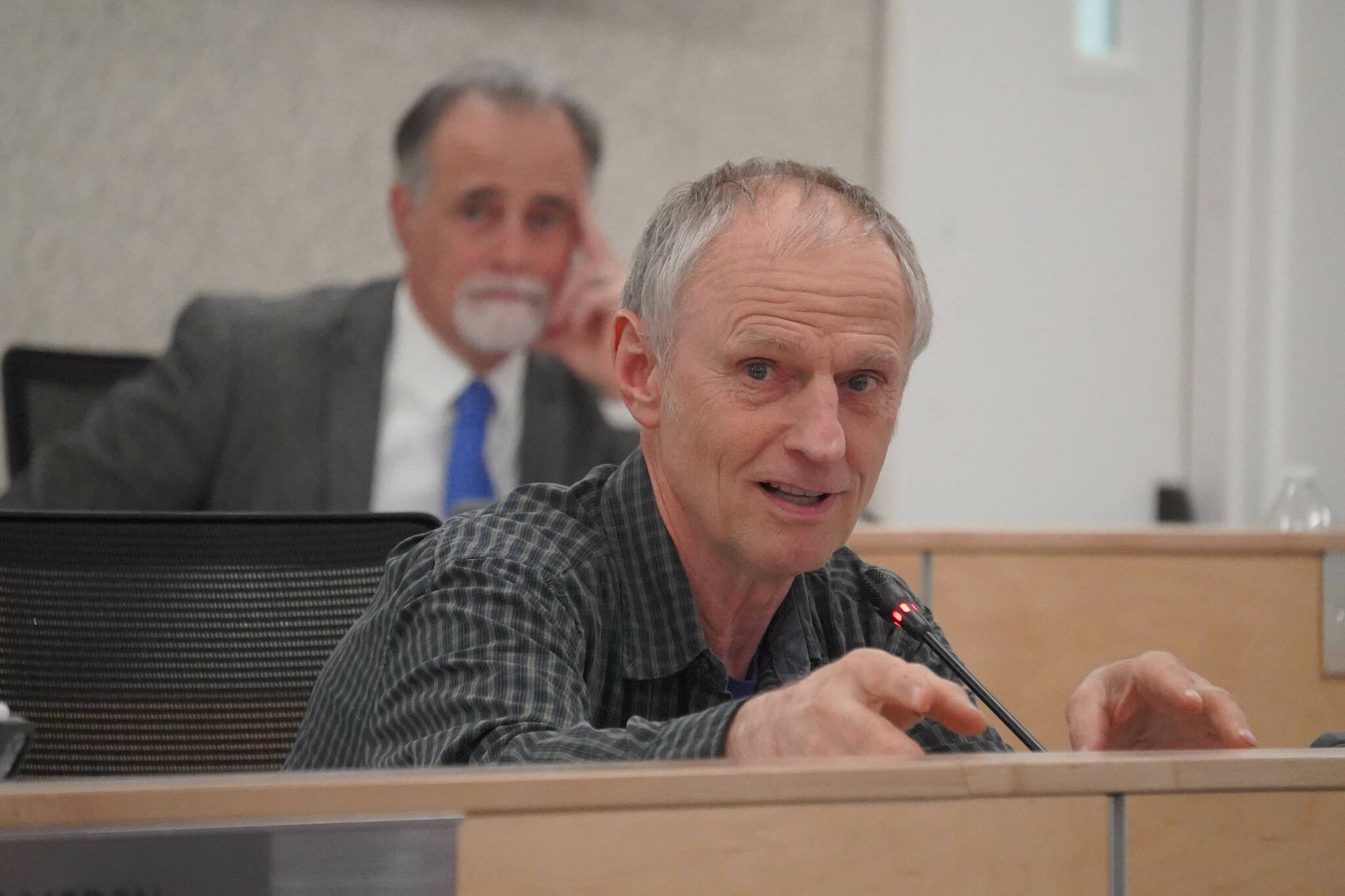The Kenai Peninsula Borough Assembly on Tuesday established the minimum amount of money it will provide to schools in the coming year, coming in roughly $5 million less than the borough school district is asking for, though the assembly said it will not determine the actual contribution amount until later in its annual budget process.
That move means that the district will not know exactly how much money it is receiving from the borough until the budget is completed June 3. The district, in advancing a preliminary budget last month, asked the borough to fund to the maximum allowable amount, around $62.4 million. The funding floor, set Tuesday, is nearly $57.6 million.
The borough has to provide funding to the school district within a range determined by a calculation based on the borough’s property values. There are minimum and maximum amounts that the borough can provide to the district, ranging from around $35.5 million at the lowest possible contribution to the requested $62.4 million at the other end. As property values have rapidly escalated in recent years, the school funding range has similarly increased — funding to the cap last year would have totaled $58.2 million.
This year’s $57.6 million amount advanced Tuesday was brought forward by Kenai Peninsula Borough Mayor Peter Micciche in his proposed borough budget for the coming fiscal year. The mayor has said repeatedly in recent months that the state is responsible for funding education. He says the Kenai Peninsula Borough is more generous with school funding than similar boroughs in the state and cannot continue funding education at such a significant level in the long run.
The borough shouldn’t be made to repeatedly fund at or near the cap to keep its district operating, and Micciche says providing funding to that level takes pressure off the state to meet its obligations.
The proposed amount, he said, is near to the cap. The borough’s finance department during a Tuesday presentation said that, without an increase in state funding, the Kenai Peninsula Borough would overtake the state in funding education as soon as 2027 — with even the minimum contribution exceeding state money by the mid 2030s.
“Is the state living up to its constitutional requirement when a little borough like the Kenai Peninsula Borough passes them on spending?” Micciche asked. “I don’t think so … That’s not how it’s supposed to work.”
Some members of the assembly said they wanted to see more funding advanced sooner for the district, while others said they would support funding to a greater amount later.
Tyson Cox said that, while the borough waits to see how the state’s Legislature and governor act, teachers and support staff are already looking for other jobs as their facilities and programs are scheduled to be eliminated.
“I would do it tonight,” he said. “The sooner that we can get some of those funds to the district, the less likely it is some of those jobs go away and we lose people.”
Brent Johnson had prepared an amendment to increase the local contribution but said Tuesday that he wouldn’t introduce it because he had seen he lacked the necessary support to pass it. He said that he thought the borough funding to the cap would give legislators incentive to act, but that he would accept the body’s move to “kick this can down the road.”
The Alaska Legislature last month approved a $700 increase in per-student funding that awaits the governor’s signature. Kenai Peninsula Borough School District leadership have said that increase is likely insufficient to reverse cuts proposed in their preliminary budget.
A resolution setting the funding floor was passed on a 7-2 vote, with Cox and Cindy Ecklund opposed.
Facing a $17 million deficit — or a $21 million deficit at the new funding floor — the Kenai Peninsula Borough School District has advanced a budget calling for the closure of Sterling Elementary and Nikolaevsk School, as well as a broad swath of cuts to staff and programs across all of the district’s schools. There would be fewer teachers in each school, programs like the Kenai Peninsula Middle College School would be wholly eliminated, and funds for extracurricular stipends would be sharply cut.
The deficits are driven by inflationary pressure that hasn’t been met by state funding, members of the assembly said. Micciche said the cost of doing the business of education has gone up in the face of flat state funding. Cox said schools like Soldotna High School have lost opportunities as their buying power has been eroded over more than a decade by inflationary pressure.
“I think the blame for this does fall squarely on our legislators down in Juneau and our governor,” Assembly President Peter Ribbens said. “I think that it’s irresponsible for our legislators not to have a solid fiscal plan.”
A recording of the meeting can be found at kpb.legistar.com.


